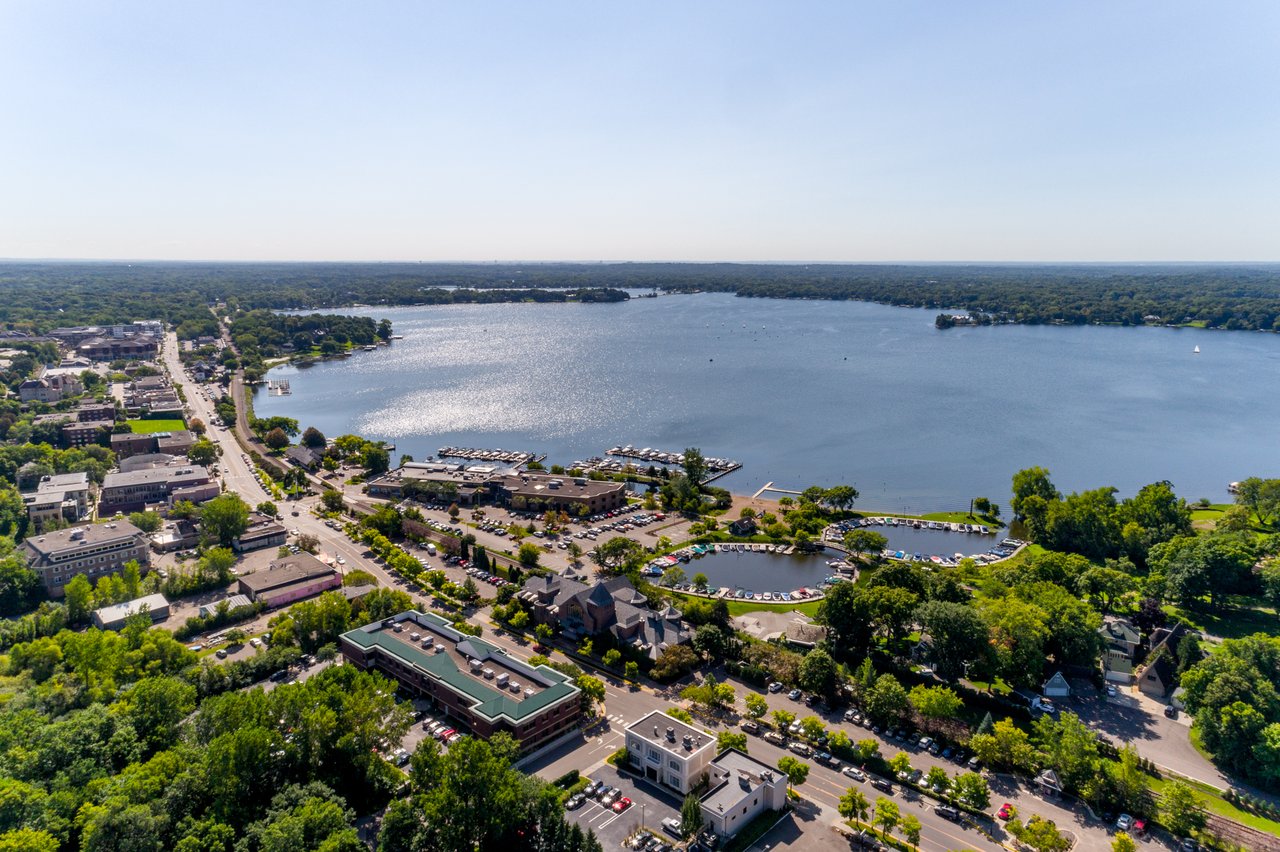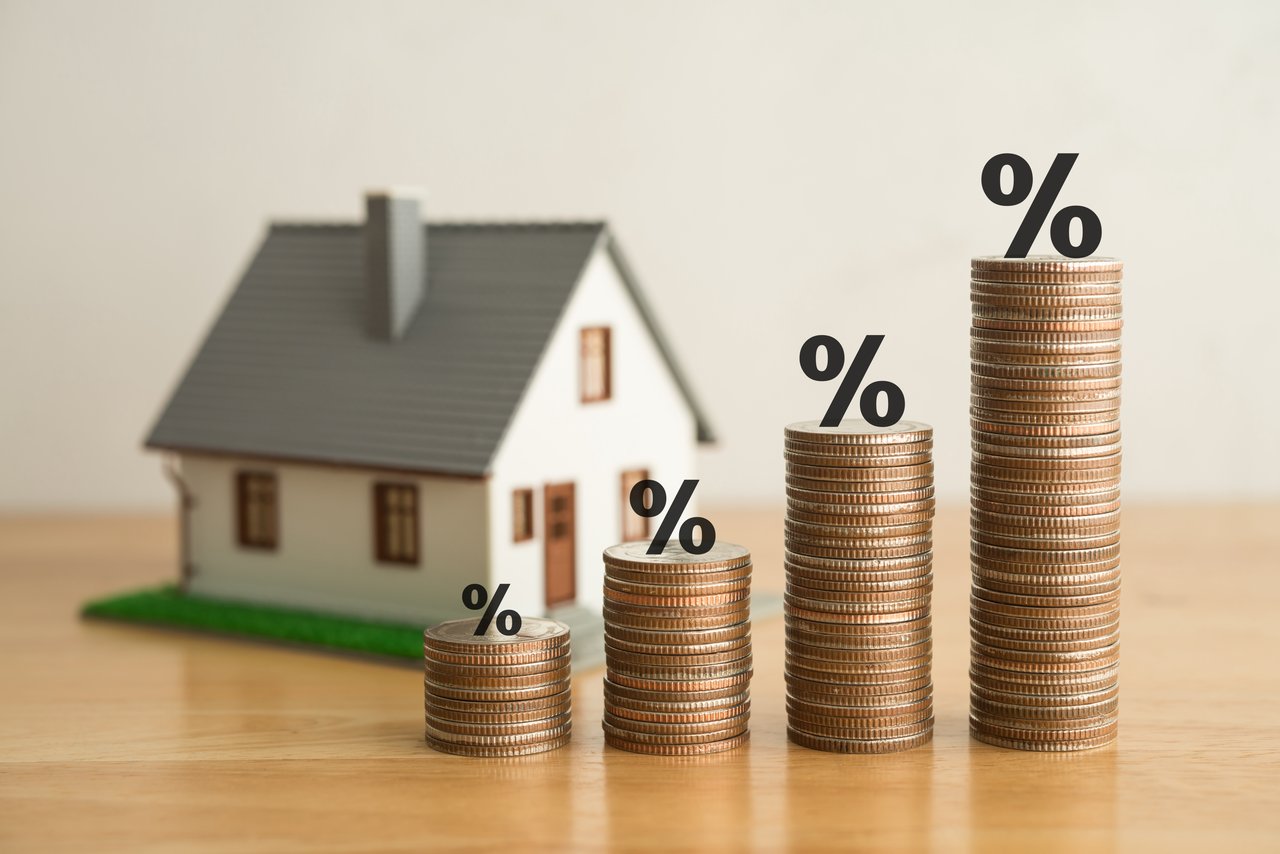More homes changed hands in the Twin Cities and in the U.S. during 2015 than any other year in the past decade and median home prices are now just 4.5 percent below their all-time peak from 2006.
But why have prices risen so high, so fast? Did the U.S. economy launch into a golden age of prosperity and growth in 2011 that will continue to sustain us into the future? Or is this a new economic bubble built on artificially low-interest rates and monetary stimulus from the Federal Reserve?
But why have prices risen so high, so fast? Did the U.S. economy launch into a golden age of prosperity and growth in 2011 that will continue to sustain us into the future? Or is this a new economic bubble built on artificially low-interest rates and monetary stimulus from the Federal Reserve?
Economies function very similar to the way a human body functions. The natural indicators and mechanisms within the economy are constantly fighting to achieve a healthy equilibrium.
The most important mechanism in the economy's natural balancing process is the pricing mechanism. Simple Examples: When supply gets too low and demand too high, prices rise to attract the necessary people, capital and resources. The adverse is also true, when supply gets too high and demand too low, prices fall in order to attract the necessary demand and to allow people, capital and resources to be re-allocated where they are needed the most. Such is the nature of the business cycle. Market prices are not determined arbitrarily nor can a central banker simply guess the fair market price. Fair market prices are derived through an organic, economic process.
When the price of money (the rate of interest at which money can be borrowed) is artificially fixed by a central authority rather than determined organically by the market, the most important element of the economy's natural balancing process is disabled and false indicators are sent to the players within the economy. The severity of the false indicators is relative to the difference between the artificially controlled price and what the price naturally would have been, absent the artificial intervention. Those false indicators lead to altered economic behavior (or malinvestment as Ludwig Von Mises called it) and the result is an artificial economic distortion that must be resolved before the economy can ever return to a healthy state of balance.
Artificial economic stimulants work in the same way that artificial human stimulants work. You get a temporary high and feel great for a short period of time (the boom) but as soon as you discontinue use of the stimulant, reality sets in and you are forced to discover how unhealthy you really are. You then must suffer through the hangover (the bust) before your body can return to a healthy state of balance. Such is the nature of America's modern day boom and bust cycle.
Federal Reserve Intervention and the Housing Bubble:
No one knows exactly what the market rate of interest would be absent the Federal Reserve's continual intervention, however history does give us some general ideas. Most economists would agree that the Fed has kept interest rates artificially below market since the early 1990s. During that time frame, housing prices have risen by 227% and the stock market has risen by 482%.
From 2000 to 2002 the Fed aggressively reduced the Fed Funds Rate from around 6% down to around 1% and kept the rate there until 2004 when they began to progressively raise it back up. As a result, in just 6 years (from 2000 to 2006) housing prices rose by 80%. The broad economic consensus is that a bubble was inflated in the U.S. housing market during that time which burst in 2007, however very few economic pundits have made any meaningful connection between the housing bubble and the Fed's monetary stimulus activity. However if you look objectively at the Fed's significantly increased economic intervention over the past 25 years and the significantly increased volatility in the markets over that time frame, the correlation is very difficult to ignore.
In mid to late 2006, the housing market peaked and prices began to fall in the market's attempt to correct the artificial imbalances from the boom of the early 2000s. But rather than allowing the market to resolve the distortion and return to a healthy state of balance, the Fed once again (in the third quarter of 2007) chose intervention by launching their response of aggressive rate reductions. This time around, the Fed's intervention became so aggressive that in December of 2008, for the first time in the 100 year history of America's Central Bank, they reduced the Fed Funds Rate to zero and they kept rates there for 7 years (until December 15th of 2015).
In late 2008, despite the fact that interest rates were at historical lows, housing prices in the U.S. continued to fall. So in January of 2009, the Fed (seemingly determined to alter the market's course) launched a never before conceived of experiment in monetary stimulus called "quantitative easing". Over the next five years, the Fed used QE to add an unprecedented, $3.5 trillion to the money supply and pumped it into America's economic system by purchasing various financial instruments. (To put things into perspective, that is enough money give every man, woman and child in the U.S., $11,000.)
The result of all of all this unprecedented, economic intervention is a re-inflated bubble in both the U.S. equity and housing markets and an unstable economy.
Real wealth does not derive from the pressing of a button on a computer. It is created through sacrifice, savings and increased productive output from increased efficiency and capital investment. While the past 8 years of the Fed's massive economic stimulus has helped the economy "feel good" by creating a temporary wealth effect and through the increased economic activity that comes from rising prices, it is important for people to remember that these effects are all temporary. As soon as this economic stimulant is discontinued, reality will set in, the phony wealth will evaporate and the hangover (the recession) will set in. The U.S. economy is not being helped by stimulus, rather the markets within the economy are being temporarily propped up by stimulus, further enhancing the artificial imbalances.
But didn't the economy improve in 2015? While it is true that the U.S. economy had a net increase in jobs in 2015, it’s important to note that the pay quality of the jobs gained was significantly lower than the pay quality of the jobs lost. It is also notable that demographically, a large percentage of the people who accepted the “new jobs” were people above the age of 60 who were supposed to have been retired which indicates a rising cost of living for Americans. Also during 2015, the income gap widened and the middle class continued to shrink. These are not signs of a healthy, recovering economy returning to a state of balance. These are signs of an imbalanced economy artificially induced from an unprecedented dosage of monetary stimulus.
Since the Fed raised the Fed Funds Rate just 25 basis points from zero to .25% on December 16th of 2015, the stock market has fallen about 9% making this January so far, the worst January on record for the U.S. stock market. The mainstream media has blamed the recent decline in equities on everything under the sun with little mention of the Fed's first rate hike in 10 years. By raising interest rates ever so slightly for the first time in 10 years, did the Fed prick their own bubble?
Where do we go from here and what does this all mean for Twin Cities home buyers and sellers?
The problem with trying to predict the future of the markets in the modern day, boom and bust economy lies in trying to predict the future actions of the Federal Reserve. For years now they have claimed that their stimulus has been working and that the health of the U.S. economy was improving but all the while, they continued to keep interest rates suppressed at zero. After finally raising the rate just .25%, the stock market immediately went into a free fall. If the stock market continues to decline and/or if the housing market begins to show any signs of weakness, will the Fed allow the correction to take place or will they continue to double down on their strategy of interventionism?
If it is true that the Fed cannot artificially pump unprecedented monetary stimulus into the economy without creating bubbles, then the Federal Reserve will continually find themselves at a crossroad with two options: A) They could admit the fallacies in their monetary policies, discontinue the endless strategy of pumping the economy full of stimulus and allow the market's natural pricing mechanisms to restore balance to the economy. Or B) They could continue down the path of artificial economic intervention, indefinitely.
If they decide to continue their intervention, then what's next? Negative interest rates? QE4? QE to infinity? Even if they realize their stimulus activity was a mistake, it's unlikely that the Fed is going to accept responsibility for America's economic woes anytime in the near future so I'm afraid that the worst of the Federal Reserve's intervention is yet to come.
Despite what the mainstream economic establishment would have you believe, falling prices from a market correction are not a dooms day machine nor do they signify the collapse of the economic system as we know it. Market corrections are the first step in the economy's natural process of restoring a stable balance and should be welcomed. In the short term, a correction in the housing sector would be good for some people, bad for others and have zero effect on the rest. But in the long term, a healthy, balanced economy with a strong, prosperous middle class would improve life for all Americans. Life is simply more fun when more of us have the opportunity to do well.
There are many ways you can protect yourself financially from modern day, economic bubbles and ensure that a potential correction in housing prices does not have a significant, negative impact on your life. In my next blog post, I will lay out a few different strategies that you can employ to protect yourself. Coming soon:
5 Tips for Protecting Your Home Equity in the Modern Day Boom and Bust Economy
While I think that people should at least be somewhat aware of the large scale economic factors that can affect their local housing market and their home equity, it is important to keep in mind that every housing market is different. In addition to national market factors, there are many local economic and market factors that play a significant role in pricing valuations. Some markets across the country are more unstable than others. Some markets could even still be undervalued although I find that unlikely in the current, low interest rate environment. Ultimately, every real estate situation should be analyzed thoughtfully and individually.
We offer world class representation services to residential clients in Minnesota. We also have established a global referral network of top producing real estate agents around the world for our clients who are relocating to or from Minnesota, nationally or internationally.
For a free consultation about the market and how it relates to your own personal real estate situation, please don't hesitate to contact us via email or by phone at (612) 888.4663.
The most important mechanism in the economy's natural balancing process is the pricing mechanism. Simple Examples: When supply gets too low and demand too high, prices rise to attract the necessary people, capital and resources. The adverse is also true, when supply gets too high and demand too low, prices fall in order to attract the necessary demand and to allow people, capital and resources to be re-allocated where they are needed the most. Such is the nature of the business cycle. Market prices are not determined arbitrarily nor can a central banker simply guess the fair market price. Fair market prices are derived through an organic, economic process.
When the price of money (the rate of interest at which money can be borrowed) is artificially fixed by a central authority rather than determined organically by the market, the most important element of the economy's natural balancing process is disabled and false indicators are sent to the players within the economy. The severity of the false indicators is relative to the difference between the artificially controlled price and what the price naturally would have been, absent the artificial intervention. Those false indicators lead to altered economic behavior (or malinvestment as Ludwig Von Mises called it) and the result is an artificial economic distortion that must be resolved before the economy can ever return to a healthy state of balance.
Artificial economic stimulants work in the same way that artificial human stimulants work. You get a temporary high and feel great for a short period of time (the boom) but as soon as you discontinue use of the stimulant, reality sets in and you are forced to discover how unhealthy you really are. You then must suffer through the hangover (the bust) before your body can return to a healthy state of balance. Such is the nature of America's modern day boom and bust cycle.
Federal Reserve Intervention and the Housing Bubble:
No one knows exactly what the market rate of interest would be absent the Federal Reserve's continual intervention, however history does give us some general ideas. Most economists would agree that the Fed has kept interest rates artificially below market since the early 1990s. During that time frame, housing prices have risen by 227% and the stock market has risen by 482%.
From 2000 to 2002 the Fed aggressively reduced the Fed Funds Rate from around 6% down to around 1% and kept the rate there until 2004 when they began to progressively raise it back up. As a result, in just 6 years (from 2000 to 2006) housing prices rose by 80%. The broad economic consensus is that a bubble was inflated in the U.S. housing market during that time which burst in 2007, however very few economic pundits have made any meaningful connection between the housing bubble and the Fed's monetary stimulus activity. However if you look objectively at the Fed's significantly increased economic intervention over the past 25 years and the significantly increased volatility in the markets over that time frame, the correlation is very difficult to ignore.
In mid to late 2006, the housing market peaked and prices began to fall in the market's attempt to correct the artificial imbalances from the boom of the early 2000s. But rather than allowing the market to resolve the distortion and return to a healthy state of balance, the Fed once again (in the third quarter of 2007) chose intervention by launching their response of aggressive rate reductions. This time around, the Fed's intervention became so aggressive that in December of 2008, for the first time in the 100 year history of America's Central Bank, they reduced the Fed Funds Rate to zero and they kept rates there for 7 years (until December 15th of 2015).
In late 2008, despite the fact that interest rates were at historical lows, housing prices in the U.S. continued to fall. So in January of 2009, the Fed (seemingly determined to alter the market's course) launched a never before conceived of experiment in monetary stimulus called "quantitative easing". Over the next five years, the Fed used QE to add an unprecedented, $3.5 trillion to the money supply and pumped it into America's economic system by purchasing various financial instruments. (To put things into perspective, that is enough money give every man, woman and child in the U.S., $11,000.)
The result of all of all this unprecedented, economic intervention is a re-inflated bubble in both the U.S. equity and housing markets and an unstable economy.
Real wealth does not derive from the pressing of a button on a computer. It is created through sacrifice, savings and increased productive output from increased efficiency and capital investment. While the past 8 years of the Fed's massive economic stimulus has helped the economy "feel good" by creating a temporary wealth effect and through the increased economic activity that comes from rising prices, it is important for people to remember that these effects are all temporary. As soon as this economic stimulant is discontinued, reality will set in, the phony wealth will evaporate and the hangover (the recession) will set in. The U.S. economy is not being helped by stimulus, rather the markets within the economy are being temporarily propped up by stimulus, further enhancing the artificial imbalances.
But didn't the economy improve in 2015? While it is true that the U.S. economy had a net increase in jobs in 2015, it’s important to note that the pay quality of the jobs gained was significantly lower than the pay quality of the jobs lost. It is also notable that demographically, a large percentage of the people who accepted the “new jobs” were people above the age of 60 who were supposed to have been retired which indicates a rising cost of living for Americans. Also during 2015, the income gap widened and the middle class continued to shrink. These are not signs of a healthy, recovering economy returning to a state of balance. These are signs of an imbalanced economy artificially induced from an unprecedented dosage of monetary stimulus.
Since the Fed raised the Fed Funds Rate just 25 basis points from zero to .25% on December 16th of 2015, the stock market has fallen about 9% making this January so far, the worst January on record for the U.S. stock market. The mainstream media has blamed the recent decline in equities on everything under the sun with little mention of the Fed's first rate hike in 10 years. By raising interest rates ever so slightly for the first time in 10 years, did the Fed prick their own bubble?
Where do we go from here and what does this all mean for Twin Cities home buyers and sellers?
The problem with trying to predict the future of the markets in the modern day, boom and bust economy lies in trying to predict the future actions of the Federal Reserve. For years now they have claimed that their stimulus has been working and that the health of the U.S. economy was improving but all the while, they continued to keep interest rates suppressed at zero. After finally raising the rate just .25%, the stock market immediately went into a free fall. If the stock market continues to decline and/or if the housing market begins to show any signs of weakness, will the Fed allow the correction to take place or will they continue to double down on their strategy of interventionism?
If it is true that the Fed cannot artificially pump unprecedented monetary stimulus into the economy without creating bubbles, then the Federal Reserve will continually find themselves at a crossroad with two options: A) They could admit the fallacies in their monetary policies, discontinue the endless strategy of pumping the economy full of stimulus and allow the market's natural pricing mechanisms to restore balance to the economy. Or B) They could continue down the path of artificial economic intervention, indefinitely.
If they decide to continue their intervention, then what's next? Negative interest rates? QE4? QE to infinity? Even if they realize their stimulus activity was a mistake, it's unlikely that the Fed is going to accept responsibility for America's economic woes anytime in the near future so I'm afraid that the worst of the Federal Reserve's intervention is yet to come.
Despite what the mainstream economic establishment would have you believe, falling prices from a market correction are not a dooms day machine nor do they signify the collapse of the economic system as we know it. Market corrections are the first step in the economy's natural process of restoring a stable balance and should be welcomed. In the short term, a correction in the housing sector would be good for some people, bad for others and have zero effect on the rest. But in the long term, a healthy, balanced economy with a strong, prosperous middle class would improve life for all Americans. Life is simply more fun when more of us have the opportunity to do well.
There are many ways you can protect yourself financially from modern day, economic bubbles and ensure that a potential correction in housing prices does not have a significant, negative impact on your life. In my next blog post, I will lay out a few different strategies that you can employ to protect yourself. Coming soon:
5 Tips for Protecting Your Home Equity in the Modern Day Boom and Bust Economy
While I think that people should at least be somewhat aware of the large scale economic factors that can affect their local housing market and their home equity, it is important to keep in mind that every housing market is different. In addition to national market factors, there are many local economic and market factors that play a significant role in pricing valuations. Some markets across the country are more unstable than others. Some markets could even still be undervalued although I find that unlikely in the current, low interest rate environment. Ultimately, every real estate situation should be analyzed thoughtfully and individually.
We offer world class representation services to residential clients in Minnesota. We also have established a global referral network of top producing real estate agents around the world for our clients who are relocating to or from Minnesota, nationally or internationally.
For a free consultation about the market and how it relates to your own personal real estate situation, please don't hesitate to contact us via email or by phone at (612) 888.4663.



